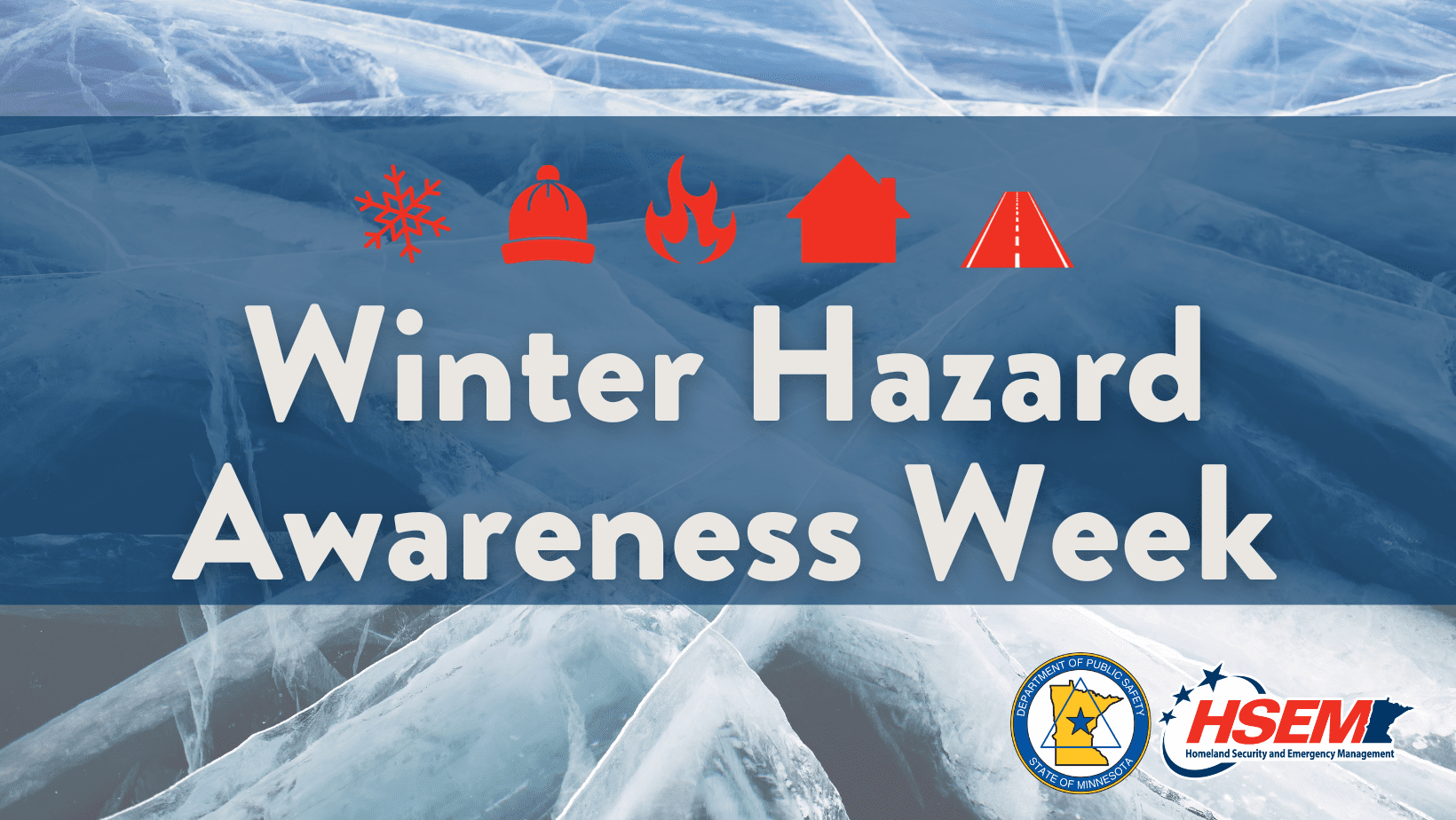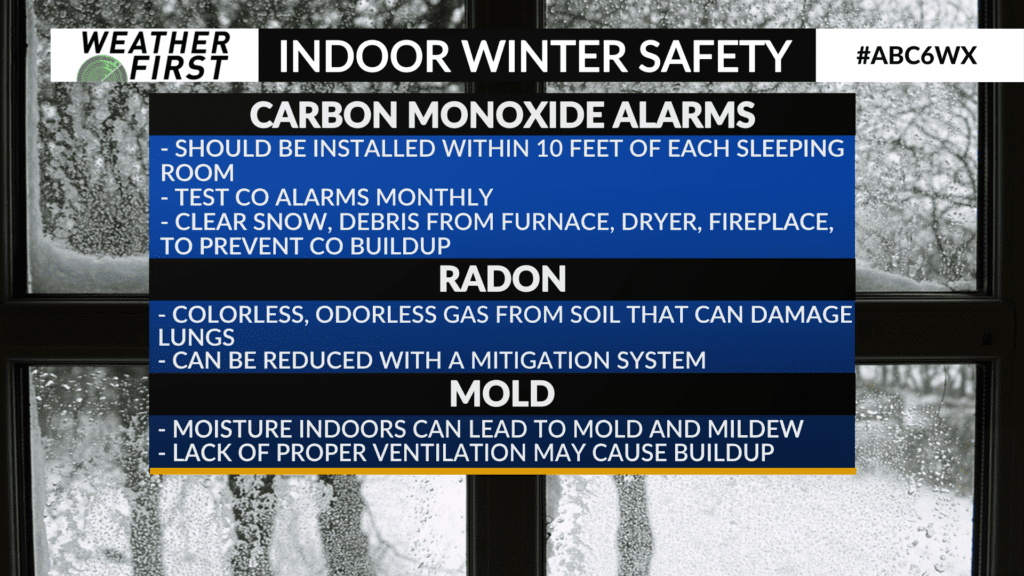Winter Weather Awareness Week: Indoor Winter Safety

Credit: Minnesota Department of Public Safety
It’s Winter Weather Awareness week in the state of Minnesota.
The week is designed to help Minnesotans reduce the risks of winter. The Minnesota Department of Public Safety sponsors the week every fall in collaboration with the National Weather Service (NWS) and other state, federal, and non-profit agencies.
There will be a different theme each day in the effort to provide information that can be used with school, church or civic programs.
The theme for Thursday is Indoor Winter Safety.
CARBON MONOXIDE ALARMS
Carbon Monoxide (CO) poisoning can happen at any time of the year, but the danger is greater during the winter when doors and windows stay closed and fireplaces, gas heaters, or other fuel burning appliances are in use. In addition, people can also be exposed to deadly CO levels when “warming up” their cars in garages or keeping them running when stuck in snow.
With this in mind, it is important to have your furnace, heater or other appliances inspected to ensure that there are no levels of carbon monoxide being emitted from them. “Issues with appliances such as a gas furnace or gas stove or water heater, you want to make sure those are operating safely and that there’s no leak that you may not be aware of” says Michael Kurz of The National Weather Service of La Crosse, WI.
“Have a working carbon monoxide and smoke alarm on every level of your house and test frequently to make sure they are in order”.
- Carbon monoxide alarms should be installed within 10 feet of each sleeping room or inside each sleeping room.
- Test CO alarms monthly.
- If a CO alarm sounds and you feel ill, call 911 immediately. If you feel fine, open windows and doors and call your utility company.
- Clear snow and debris from furnace, dryer, fireplace or oven vents around your home to prevent a CO buildup.
RADON
Radon is a colorless and odorless gas that comes from the soil. The gas can accumulate in the home. Radon gas decays into fine particles that are radioactive. When inhaled, these fine particles can damage the lungs. Exposure to radon over a long period of time can lead to lung cancer.
It is estimated that 21,000 people die each year in the United States from lung cancer due to radon exposure. A radon test is the only way to know how much radon is in your home. Radon can be reduced with a mitigation system.
CLICK HERE to learn how to protect your home from radon.
MOLD
Several factors lead to increased concerns about mold during the winter months. Moisture conditions indoors can lead to the growth of molds and mildews. While forced air heating systems make indoor air drier overall during the winter months, certain areas of the home may experience intensified levels of humidity because of a lack of ventilation.
